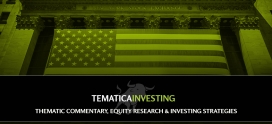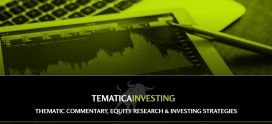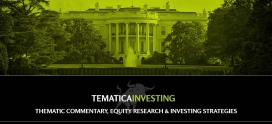An Opportunity out of the China Situation that Next to No One Is Talking About
What very few are talking about is what happened just after China’s devaluation of its currency on Aug. 11 and how it could affect the U.S. going forward.
When China loosened its grip, its currency fell more than China wanted. To stop the slide, the People’s Bank of China was forced to liquidate more than $100 billion of its reserves to support its currency, effectively engaging in a reverse of quantitative easing.
What asset did China primarily dump? U.S. Treasuries!
Back when the Fed was buying up Treasuries in order to put more money into the economy, a.k.a. quantitative easing, China was continuing its unprecedented reserve-accumulation exercise, which, starting in 2003, amassed almost $4 trillion in foreign assets! That is more than all of the Fed’s QE programs combined. So what we really experienced on a global level was hyper-QE.
If China finds it needs to support its currency even further, as the rest of the world sees its economy slowing and puts downward pressure on the Yuan, it will need to sell more reserves to support its currency, and it has a lot of Treasuries along with other assets available for sale. That will increase the amount of Treasuries on the market, which will push prices down and yields up — again a reverse of what we saw in QE. And so we are on the cusp of entering the era of quantitative tightening!
Now if that didn’t get your attention, perhaps this geek-out will. A recent working paper published by the Bank for International Settlements titled “Global Dollar Credit and Carry Trades” found that one of the unintended consequences of the Federal Reserve’s quantitative easing program was the significant increase in issuance of dollar-denominated corporate bonds by emerging-market companies where the proceeds primarily fed into existing cash balances, a form of corporate dollar carry trade. The paper cites a 2015 study that estimates that the outstanding dollar-denominated debt of non-bank entities located outside the U.S. was around $9.2 trillion at the end of September 2015, an increase of more than 50% from the beginning of 2010.

In early August we pointed out just how much the dollar has appreciated relative to most every other currency since the end of QE, making this carry trade increasingly untenable. We’ve seen more and more slowing across the globe, with commodity-heavy countries like Australia, New Zealand and Canada (who just reported that it is now in a recession after two quarters of negative GDP growth) engaging in pretty aggressive easing cycles, which will only further weaken their currencies relative to the dollar. What is even more concerning is that a rather large percentage of these firms are in mining, oil and gas sectors, and we all know what has happened to prices for those commodities!
This means we have companies whose domestic currency is sliding further and further against the dollar in sectors that have been utterly slammed, with outstanding dollar-denominated bonds, making those bonds more and more expensive every day — pushing an unwinding of this dollar carry trade. We suspect traders on Wall Street aren’t the only ones stocking up on Mylanta these days, giving Johnson & Johnson ([stock_quote symbol=”JNJ”]) a tailwind in the midst of a tough market!
The Bottomline on all this . . .
Based on the data over the last few weeks and months, in our view the renewed global economic uncertainty —China as well as Russia (thanks to the drop in oil prices) as well as issues in Brazil plus mounting data that points to a slowing domestic economy — will see the Fed hold off hiking interest rates until later in the year if not 2016.
Let’s remember, too, that inflation remains far closer to 0% than the Fed’s 2% target rate, at least for now. While all of that is rather clear to us, for the market the issue is the coy nature of the Fed heads of late. We rather doubt the Fed will want to the tipping point that turns the current slowdown into something worse.
What does this mean for you?
Welcome to the macro jungle! Between China and the enormous dollar carry trade unwind, there are forces that can easily overwhelm any little rate hike the Fed may launch, which we still think is highly unlikely. So, as we see it:
- The dollar is likely to continue to dominate — which is good for PowerShares DB US Dollar Index ([stock_quote symbol=”UPP”]) or WisdomTree Bloomberg USD Bullish Fund ([stock_quote symbol=”USDU”]).
- Volatility is not disappearing any time soon — good for those willing to brave iPath S&P 500 VIX Futures ETN ([stock_quote symbol=”VXX”])
- Emerging-market corporate bonds could get hit hard — not good for funds like iShares Emerging Markets Corporate Bond ETF ([stock_quote symbol=”CEMB”]).





